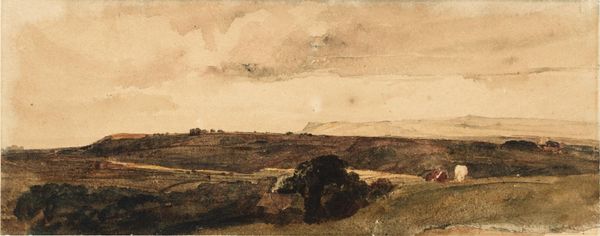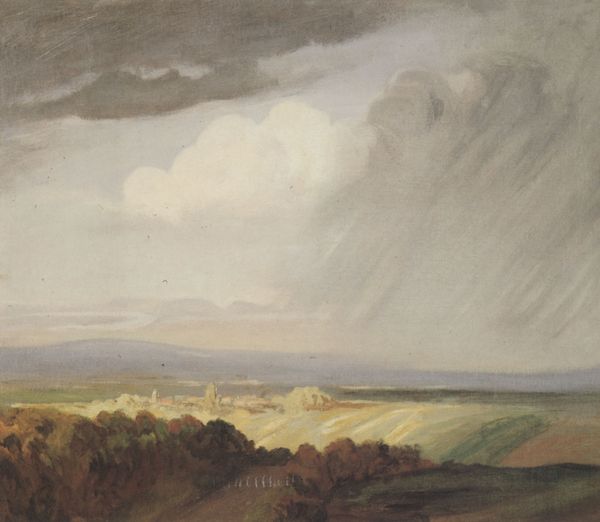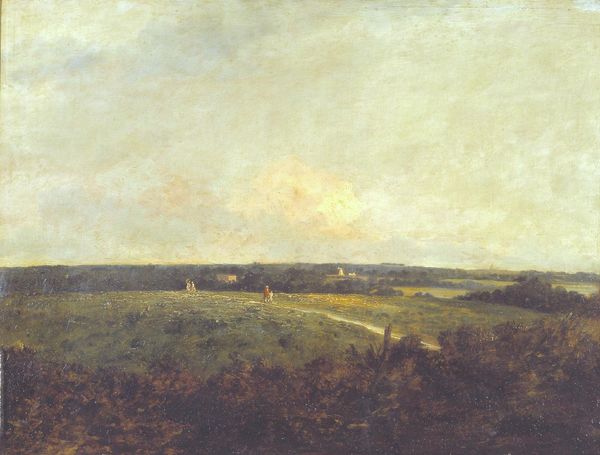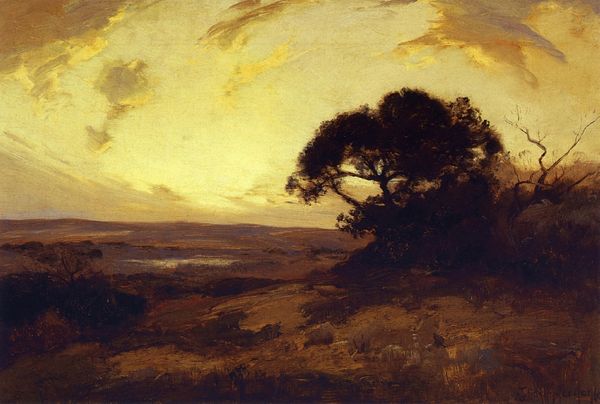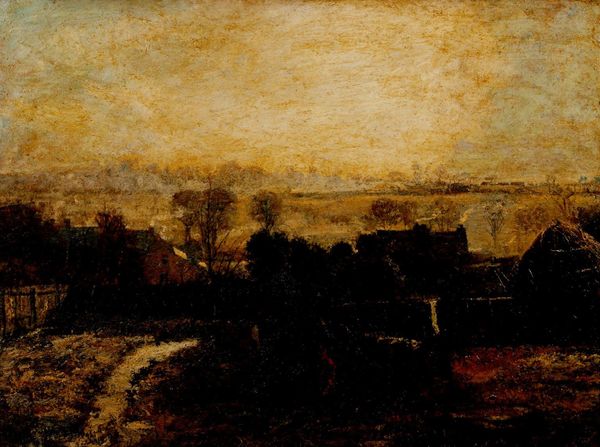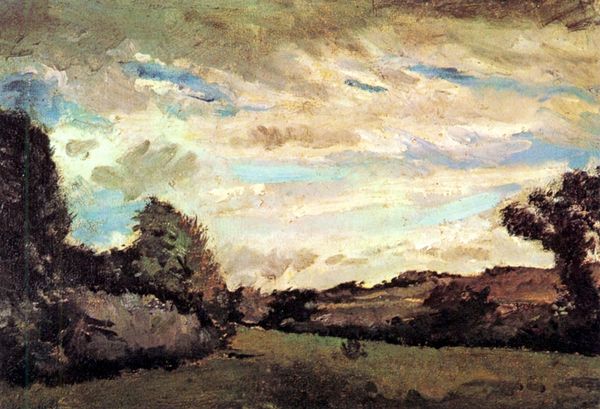
painting, plein-air, oil-paint
#
painting
#
plein-air
#
oil-paint
#
landscape
#
oil painting
#
romanticism
#
hudson-river-school
#
realism
Dimensions: 15.9 x 24.8 cm
Copyright: Public domain
Curator: Ah, the promise of a downpour. Jean-Baptiste-Camille Corot painted this oil on canvas, "Wooded Plateau, Fontainebleau" around 1840. It's part of a private collection, a fleeting moment captured for posterity. Editor: Immediately, it strikes me as both calming and vaguely ominous. That sky, heavy with cloud, contrasts so starkly with the textured foliage. What I am observing here is the sheer breadth and scope of our world’s unvarnished panoramas. Curator: Corot was pivotal in transitioning from academic landscape painting to something far more immediate and observed. He, along with others, took to painting en plein air – outside, directly from the landscape itself. No filters. Just seeing. Editor: And it's not just documentation; it's interpretation, right? There's a romantic sensibility in that diffuse light, almost melancholic. It's more than topography. It seems more of a mirror reflecting on his inner experiences out on location painting at that time. It is indeed, deeply human. Curator: Absolutely. And Corot was at Fontainebleau regularly during this period, becoming well known among the community of painters in this royal forest located southeast of Paris. Fontainebleau wasn’t just a beautiful place, it was becoming a center, and school, of artistic study itself. Editor: Considering all those assembled artistic influences and communities that were coming to prominence at this time—how do you situate Corot, with all those movements burgeoning at once? Is it Realism, is it Romanticism? Both? Neither? It's difficult to affix. Curator: The Hudson River School had its parallels and overlapping years, absolutely, and a Romantic impulse is visible within both movements for sure, although Corot was working earlier, of course. We’re pre-Impressionism, in that crucial transition phase—but looking hard and without affectation becomes ever more important. Editor: It’s also, now that I think about it, so painterly. Those thick brushstrokes and earth-tone pallette build a real texture that invite you to explore the feel and appearance. It also strikes me as such an intimate piece, that heavy sky adding a profound element of contrast. Curator: In his day Corot’s artistic stance, capturing direct observations and atmospheric affects would have stood in contrast to any grand or staged depictions of land or nature. We feel the dampness, we smell the trees and grasses. Editor: Ultimately, a glimpse into a singular consciousness trying to put itself onto canvas in conversation with nature and all its fleeting mysteries. I admire his openness, truly!
Comments
No comments
Be the first to comment and join the conversation on the ultimate creative platform.


